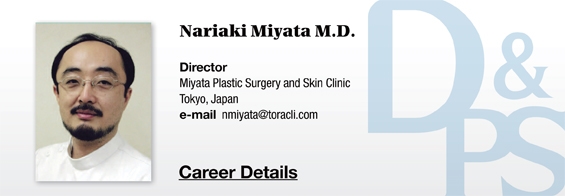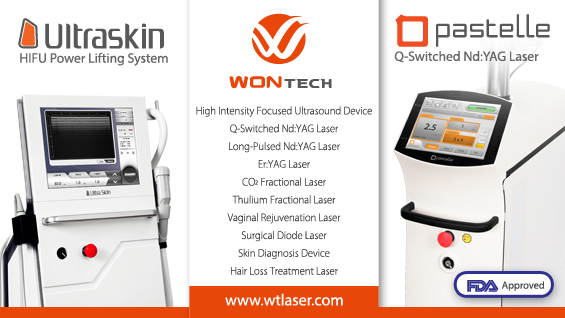
Prior to starting therapy, I clearly communicate to my patients that purpose of pore treatment is not to reduce the number of pores but to make them less noticeable. As pores and sebaceous glands are normal parts of the skin, the visible treatment effects will be limited. Particularly, if the pores that the patient finds problematic are already of normal size, the patient will not be satisfied with the outcome and will seek unnecessary repeated procedures. It is important to balance their expectations before starting the therapy.
Microdermabrasion is most commonly used for pore reduction. I mainly use the diamond installed bar for this procedure. Avoid spraying liquid agents over the pores as the ingredients of the drug could mix with sebum and block the pores. However, this method has limited efficacy. It may be ideal for patients who are averse to pain or downtime but patients who are less sensitive may benefit more from laser therapy.
Fractional laser therapy is the general mode of treatment for pore reduction. In patients who do not want crusting and downtime, non-ablative fractional laser is used. However, the non-ablative method requires many repetitions and has limited efficacy, I prefer the ablative method. A pore has an inverted funnel shape where it tends to widen toward the skin surface, therefore smoothing down the micro bumps of the skin surface can reduce its appearance. Skin with normal texture but is dense with small indentations tend to have pores that are more visible than acne scars. Therefore, the energy density parameter should be adjusted, rather than the output of laser.
I use fractional Er:YAG laser or fractional CO2 laser devices that have high wattage and low thermal effect on the surrounding tissues (Syneron-Candela’s CO₂RE). Each doctor has different preferences but to achieve a smooth skin surface, the energy density should be raised. It is important to practice caution to minimize the thermal damage to the surrounding tissues to prevent PIH.
[Advertisement] Ultra Skin/Pastelle – Manufacturer: WONTECH(www.wtlaser.com)
Another good treatment would be peeling but this is not an easily accepted method among Japanese patients. The Er:YAG laser failed to be popular in Japan as it caused a long downtime but did not bring drastic improvement. Patients seeking to remove acne scars are more accepting of downtime but those seeking to reduce pores are resistant toward the idea of downtime. In short, the downtime inherent with fractional laser is the biggest obstacle in Japan. In this regard, Solta Medical’s Fraxel Dual or Sciton’s Halo, etc. have promising future.
At my practice, laser therapy combined with carbon oil is most frequently used for pore reduction. Pores are cleansed and sufficient amount of carbon oil is applied over the skin. This is followed by irradiation of laser that target carbon particles. Carbon particles work as a medium of laser energy that is delivered inside pores, leading them to contract. Generally, the Q-switched Nd:YAG laser is used for this procedure.
-To be continued




















